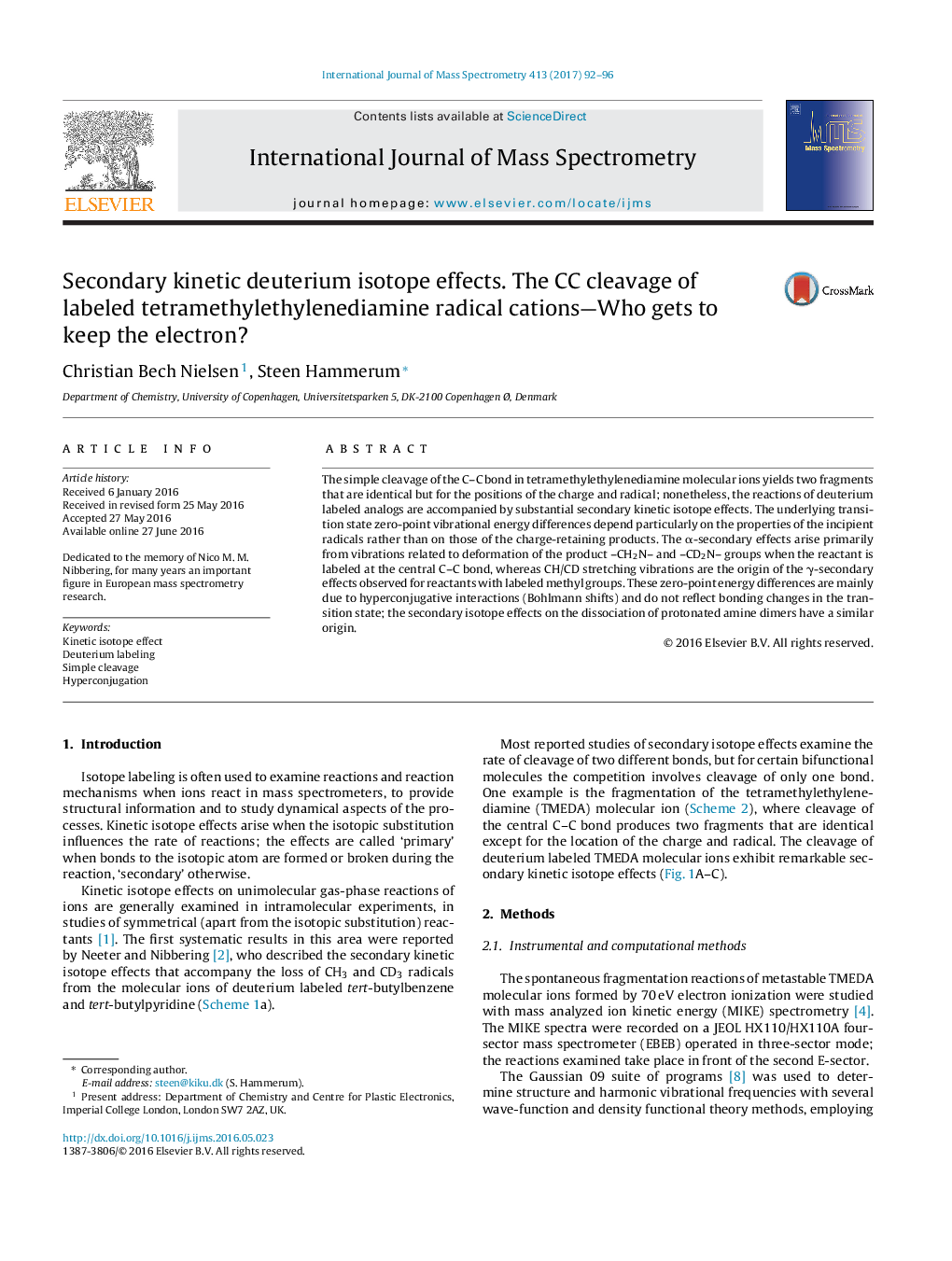| Article ID | Journal | Published Year | Pages | File Type |
|---|---|---|---|---|
| 5134399 | International Journal of Mass Spectrometry | 2017 | 5 Pages |
The simple cleavage of the C-C bond in tetramethylethylenediamine molecular ions yields two fragments that are identical but for the positions of the charge and radical; nonetheless, the reactions of deuterium labeled analogs are accompanied by substantial secondary kinetic isotope effects. The underlying transition state zero-point vibrational energy differences depend particularly on the properties of the incipient radicals rather than on those of the charge-retaining products. The α-secondary effects arise primarily from vibrations related to deformation of the product -CH2N- and -CD2N- groups when the reactant is labeled at the central C-C bond, whereas CH/CD stretching vibrations are the origin of the γ-secondary effects observed for reactants with labeled methyl groups. These zero-point energy differences are mainly due to hyperconjugative interactions (Bohlmann shifts) and do not reflect bonding changes in the transition state; the secondary isotope effects on the dissociation of protonated amine dimers have a similar origin.
Graphical abstractDownload high-res image (50KB)Download full-size image
